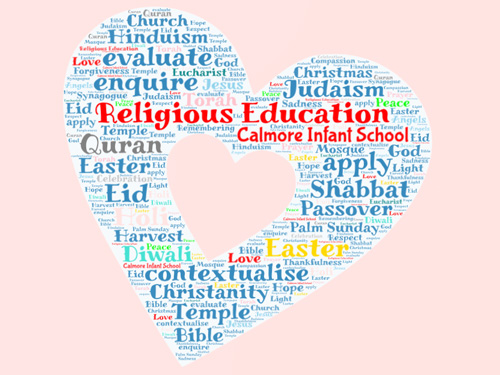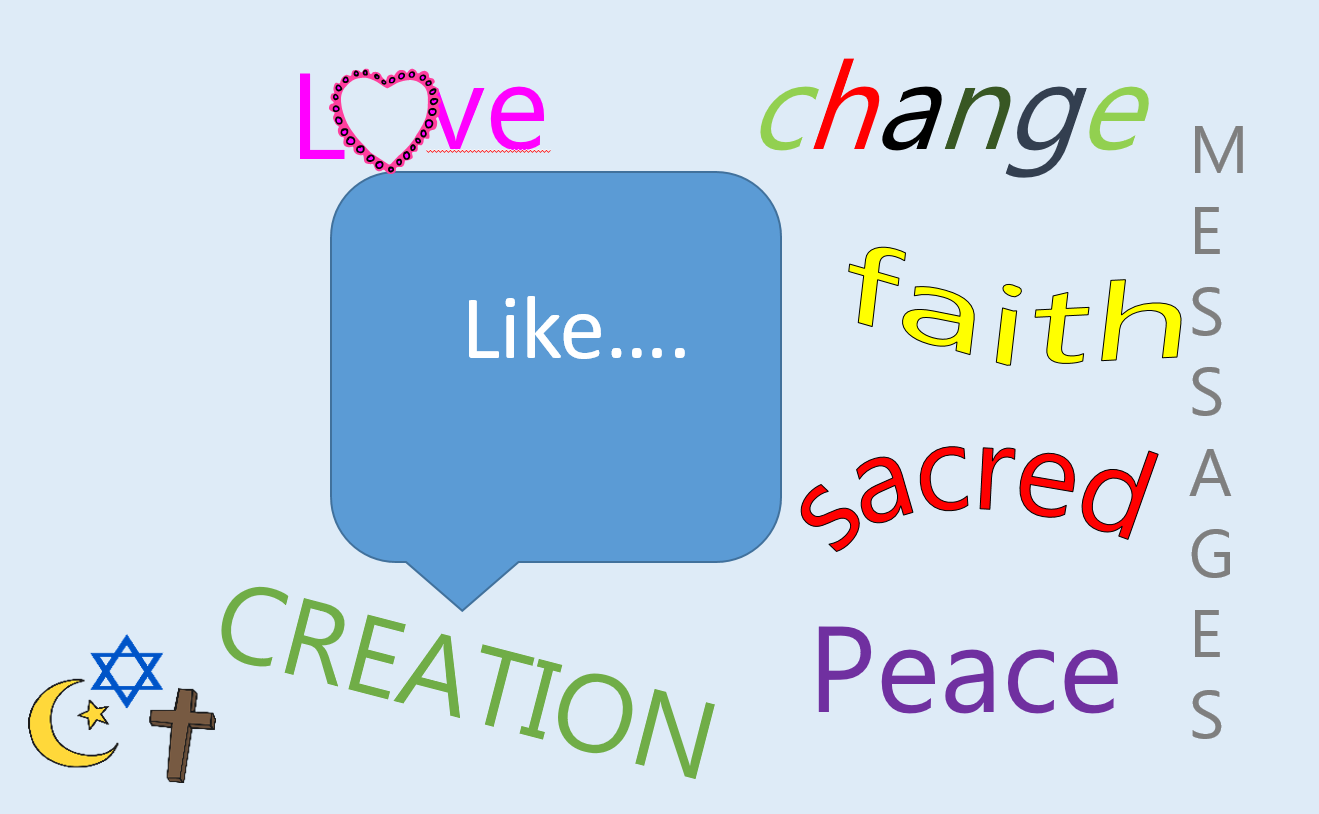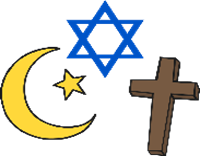RE
At Calmore Infant school Religious Education is taught to all children except for those withdrawn at the wish of their parents. Our planning follows the Hampshire County Council agreed syllabus Living Difference IV.
During their time at Calmore, children explore Christianity and Judaism. They learn different beliefs about God, and the world around them. They encounter and respond to a range of stories, artefacts and other religious material relevant to both these religions.
Throughout school, children learn that beliefs are expressed in different ways by different people. They get the chance to understand the importance and value of religious belief, especially for other children and their families. Children get the chance to talk about what is important to them and others, valuing themselves, reflecting on their own feelings and experiences and developing a sense of belonging.

We want our Religious Education element of our school curriculum to engage, inspire, challenge and encourage pupils, equipping them with the knowledge and skills to answer challenging questions, explore different religious beliefs, values and traditions and develop a more rigorous understanding of the numerous religious traditions, beliefs and practices that are followed in our multicultural society.
We believe that religious education enables pupils to combat prejudice, preparing them for life-long learning.
In RE, we learn about Concepts:
It is an idea. Quite often, you can think about it, but you can not touch it or pick it up.

Once we have chosen our concept, we think about it in different ways.
Inquire: What does is mean? Does everyone agree?
Contextualise: (The religious bit) What do religious people make of it? Can we find it in their stories? In their pictures?What do they say about it?
Evaluate: Why is the concept important to the religious people? How do we feel about how they feel? It is ok to disagree - we need to be respectful.
Apply:
What difference does it make to you, to other people? What if it did not exist?
Contextualise: (The religious bit)
What do religious people make of it? Can we find it in their stories? In their pictures?What do they say about it?

